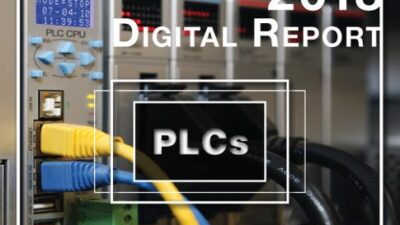Latest guidelines for COM-Express-compatible modules for ultra mobile devices are ready for download.
Eching, Germany — The credit-card-sized (84 mm x 55 mm) nanoETXexpress computer-on-module (COM) form factor for developing ultra mobile mini-devices based on x86 processors in 45 nm technology now has its own dedicated Website. NanoETXexpress COMs are 100% compatible with the COM Express COM.0 Type 1 with respect to the pin definition and connectors’ physical positioning on the module. Therefore, the various sizes of COM Express compatible COMs (basic, extended, micro, nano) are interchangeable, and carrier-board designs are reusable. This enables developers to draw upon their existing experience with COM Express modules. Only the dimensions are reduced in the nanoETXexpress form factor.
The nanoETXexpress specification was invented by single-board computer vendor Kontron , which is promoting it as a multi-vendor industry standard. The company says it defines all of the long-term relevant interfaces, such as Gigabit Ethernet, SATA, USB and PCI Express (including PCIe Gen 2) as well as audio and graphics. Memory and Flash are also already on board. Compared with card edge connectors, the nanoETXexpress connector is significantly more future proof. Since it has less electronic attenuation, it enables longer pathways on the carrier board. This is important since green IT trends will reduce the possible pathway length in the long term. In addition, it offers greater shock and vibration resistance as well as a clear advantage when it comes to EMC. This is also important since the demands on shielding are increasing due to factors, such as second generation PCIe, for example, that doubles the wire speed and thereby the frequency, resulting in the need for greater shielding. Therefore, it makes the most sense to use this Computer-on-Module design that clearly offers the longest lifecycle.
In designing this “nano” COM Express form factor, Kontron says it was able to draw upon experience developing DIMM-PC (ISA) and X-board (PCI) designs as well as the Intel processor roadmap to ensure the highest degree of design security. Additionally, the company says it conducted extensive research among ultra mobile designers to best understand their performance, integrated features, and size needs.
According to the company, the site was designed with the following objectives:
• Update the PICMG COM Express specification to better address the needs of ultra mobile, handheld applications;
• Provide a key information portal providing all relevant information on the open COM Express COM.0 Type 1 compatible COM standard;
• Incorporate all nanoETXexpress solutions from all manufacturers, thereby underlining the openness of the new form factor
• Document evolution of the specification;
• Provide developers with the latest updates through a news alert system;
• Assist developers with the new challenges they face in creating systems under the specification.
The Website offers valuable information on, for example, handling more concentrated heat sources, building smart battery management systems , and integrating various displays with standard software when the screens only offer, for example, 800 x 400 pixels. The nanoETXexpress knowledge base (currently in development) will answer these questions and more.
By utilizing the latest Web technologies, nanoETXexpress experts expect to quickly respond to customers’ questions with precise answers that offer long-term solutions. By providing a knowledge base containing all relevant information required for designing mobile devices with COMs, hardware and software developers will have a real-time online information resource as well as a community of nanoETXexpress users and designers.
— C.G. Masi , senior editor
Control Engineering Machine Control eNewsletter
Register here and scroll down to select your choice of eNewsletters free.


